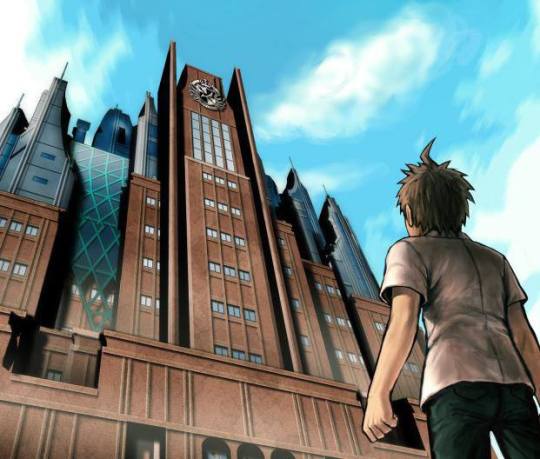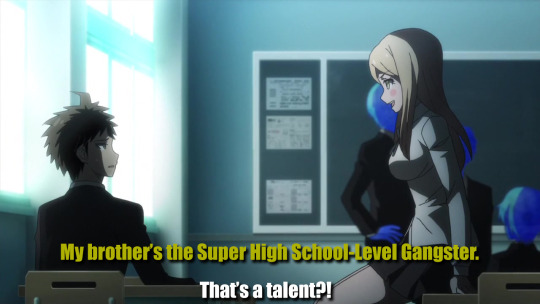#Longreads
Explore tagged Tumblr posts
Link
In the new issue of our sister publication, The Atavist Magazine, Allegra Rosenberg writes about a doomed expedition to Antarctica—and the untold love story of two crew members who survived the journey.
"Pennell left a trove of letters and diaries behind, but they sat largely unconsulted for a century. The romance hidden inside them was a gift waiting for the right moment to be discovered."
Read the introduction, “The Romance History Forgot,” on Longreads.
#longreads#storytelling#nonfiction#journalism#history#love#romance#antarctica#exploration#adventure#journey#ship#voyage#south pole
1K notes
·
View notes
Photo


Layan Albaz is one of thousands of Palestinian children who had lost limbs in Israeli air strikes since October 7—and one of the very few evacuated to the U.S. for medical care.
The new Atavist story, COMING TO AMERICA, is now live, and also available in Arabic:
The average U.S. public school has about 550 students. Imagine eight or nine schools in an area roughly the size of Philadelphia where every kid is missing at least one limb. Imagine also that their amputations happened alongside a torrent of other tragedies: the loss of family members, friends, neighbors, schools, houses.
Now imagine that the only hope to reclaim some semblance of physical normalcy required those children to leave home. Gaza’s sole manufacturer of prosthetics and its affiliated rehabilitation center were destroyed in an air strike months ago; as a result, many families of children who have lost limbs are trying to evacuate them so they can receive medical care abroad. Social media is brimming with their desperate pleas, and only a few get what amounts to a lucky ticket for the mortally unlucky: Countries willing to take pediatric amputees from Gaza are doing so in relatively small numbers.
The kids who do find a way out board planes for distant places. In Layan’s case, that place was more than 6,000 miles away from everything and everyone she knew.
#gaza#palestine#israel#war#conflict#chicago#middle east#longreads#true story#children#human rights#humanitarian crisis#healthcare#amputees
3K notes
·
View notes
Text
Enjoyed this essay by Diana Wynne Jones on the difference between writing for adults and writing for children:
To take the most obvious first: I found myself thinking as I wrote, "These poor adults are never going to understand this; I must explain it to them twice more and then remind them again later in different terms." Now this is something I never have to think when I write for younger readers. Children are used to making an effort to understand. They are asked for this effort every hour of every school day and, though they may not make the effort willingly, they at least expect it. In addition, nearly everyone between the ages of nine and fifteen is amazingly good at solving puzzles and following complicated plots - this being the happy result of many hours spent at computer games and watching television. I can rely on this. I can make my plots for them as complex as I please, and yet I know I never have to explain them more than once (or twice at the very most).
#diana wynne jones#writing#longreads#children's literature#i also think the part about book length is super interesting because that's my biggest pet peeve in books is the repeating of facts#drives me bonkers in nonfiction esp it's like i know that point we already covered it! but it makes sense how she's saying bc longer books#are read in parts the publisher expects you to repeat stuff to refresh memories
47 notes
·
View notes
Text
17 notes
·
View notes
Text

I don’t post thirst traps on social media. I do, however, post the occasional photo of an elaborate meal I cooked. While this might not seem as sexy as showing off my abs (existent but hidden by years of eating pretzel chips), the food photos do point to some modicum of stability, focus, a need for novelty and pleasure, and of course, a commitment to the domestic life. If I’m in my kitchen cooking dinner for my wife, I’m not out boozing with strangers. I’m at home, transfixed by the Hexclad wok we got for Christmas, a pan so nonstick I nearly sling food on myself every time I stir something in it, making me rethink centripetal force experiments from Physics class and all the summers as a kid I felt my body go around the curve of a water slide at the Rocky River public pool and swore I was about to be flung over the edge and onto the concrete below.
My intense fascination with a brand recommended by attractive celebrity chefs might also add to the fantasy that my culinary endeavors are sexy. A man knowing what equipment works best in the kitchen is a replacement for a previous generation’s obsession: tinkering with cars. Imagine how similar it is to see a man wiping grease off his hands after fiddling with a dipstick versus wiping grease off his hands after tasting a sauce with his fingers. I think this image makes my case. All that to say: I cook a lot and like to show it off for the positive feedback I receive. The Instagram hearts, the drooling emojis, the digital applause all do more for my pleasure centers than the taste of the food.
Read whole essay here!
28 notes
·
View notes
Text
Suddenly, the ship began to shudder. Hirai got to his feet, found he could barely stand, and staggered out of his cabin, grasping the handrail as he pulled himself up the narrow stairway to the bridge. “Engine trouble?” Hirai asked the captain, who’d already checked and replied that everything seemed normal. The ship continued to tremble. Looking out from the bridge, the sea appeared to be boiling.
They turned on the television. An emergency alert showed that an earthquake had struck 130 miles northeast of their location. The shaking finally stopped, and in the silence, Hirai’s mind leapt to what would come next: a tsunami.
Hirai feared these waves more than most people. He had grown up hearing the story of how one afternoon in 1923, his aunt felt the ground shake, swept up her two-year-old brother, and sprinted uphill to the cemetery, narrowly escaping floods and fires that killed over 100,000 people. That child became Hirai’s father, so he owed his existence to his aunt’s quick thinking. Now, he found himself in the same position. He knew tsunamis become dangerous when all the water displaced by the quake reaches shallow water and slows and grows taller. The Ocean Link, floating in less than 500 feet of water, was too shallow for comfort.
In the family tree of professions, submarine cable work occupies a lonely branch somewhere between heavy construction and neurosurgery. It’s precision engineering on a shifting sea using heavy metal hooks and high-tension lines that, if they snap, can cut a person in half. In Hirai’s three decades with Kokusai Cable Ship Company (KCS), he had learned that every step must be followed, no matter how chaotic the situation. Above all else, he often said, “you must always be cool."
#please read this it is sooo good#infrastructure#engineering#another point in the very full 'society needs maintainers not heroes' column#longreads
57 notes
·
View notes
Text
lemenni vidékre lvl végtelen
6 évig lakókocsival járta az európai román diaszpórát egy fotós és egy újságíró
6 notes
·
View notes
Text
Hope's Peak and... Whatever is Going on with the "Talents" They Study

Hope's Peak Academy! Where only the greatest talents are invited to focus on the areas in which they excel (and to be studied by the staff).
The people working at Hope's Peak Academy in Danganronpa (whether staff, scientists, or Steering Committee) are pretty consistently presented as being dedicated to researching and understanding the nature of talent. They talk like talent is this hazy concept that only certain people somehow possess, so they're out to crack the code of its mysterious origins.

We have top men working on the origins of talent right now. .... TOP. MEN.
Now, I know we all eventually learn just how much of a shitshow HPA was and how corrupt its primary operators were. But the evidence of their crimes is mostly focused on how they take their interest in "Talent" much too far. So long as it furthered the study of "talent," human experimentation, endangering the lives of students, and much, MUCH more were totally on the table as far as HPA's Steering Committee was concerned. Which is very bad, yes.
However! I think the issues with HPA's intentions ran even deeper. The people in charge weren't just corrupt; they were also stupid. And this is evidenced by many of the "talents" they identified and researched.
See, Hope's Peak makes no real distinction between the types of talent they identify and accept into their walls. Even though there's a MASSIVE DIFFERENCE between the talent of someone like Junko Enoshima vs. that of someone like Fuyuhiko Kuzuryuu. Y'know?
(I strongly doubt I'm the first to observe how bullshit some of these "talents" are. But since I can't find any other conversations about this on Tumblr, I'm going to move forward with making my own commentary. Sorry?)

BTW, consider this: If Komaeda were somehow born earlier and was an adult by the time the 77th Class entered HPA? He could've easily been one of the staff members putting Hajime into that metal coffin.
In descending order of "I can see why they were interested" to "WTF is this," here are the four core types of Super High School-Level "Talents" that Hope's Peak Academy welcomes within its hallowed halls:
(DISCLAIMER: I include V3 students as some of the examples cited below. YES, I know they don't attend Hope's Peak in their game's main storyline. However, they attend Hope's Peak in both UTDP and DRS. That's good enough for me; you can always ignore those examples if you disagree.)
CATEGORY (A) Talents that seem to come innaately/naturally to those who have them. These are either your wunderkind types, or they otherwise gained their talent seemingly overnight. — (e.g., Yasuhiro Hagakure, Junko Enoshima, Nagito Komaeda, Miu Iruma)
My Thoughts: Okay, SURE. I get why you'd want to study how this can happen and where these kinds of skills come from. No notes.
CATEGORY (B) Talents that are developed over a lifetime of practice and/or hard work. Most Hope's Peak students we know about seem like they slot into this category. — (e.g., Nekomaru Nidai, Mikan Tsumiki, Kaede Akamatsu)
My Thoughts: My first reaction is "What is there to study/research about this?" Do the Hope's Peak staff not know that working on something for a long time can make you get way better at that thing? Y'all reminding me of Hajime in the now-classic @reddpenn comic where he is legitimately shocked to learn people can gain skills through practice. :P But HOLD UP; let's give them the benefit of the doubt here for a sec. Perhaps Hope's Peak's personnel are wondering why only some practitioners of these talents can reach such a noteworthy level of skill by the time they're teenagers? That's the most reasonable conclusion to draw about the inclusion of these students.
CATEGORY (C) Talents that are only noteworthy because these students demonstrated some above-average skill relative to their age or because they garnered attention through one specific incident. In other words: These individuals aren't nearly as exceptional as those in the previous two categories of talent, but at least they seem pretty decent at what they're being identifed for? — (e.g., Mahiru Koizumi, Shuichi Saihara, Kaito Momota)
My Thoughts: I hope I'm being clear enough about what I mean by this category. But if not, I'll try to clarify: Shuichi was supposedly recognized for his talent solely because he caught one murderer. Mahiru's photography is almost solely portrait photography and therefore not particularly noteworthy to most photographers; she's just pretty good at the one thing she happens to do. (And in truth, her mom's reputation probably played a role in her own Hope's Peak invite.) Kaito being able to pass a basic Astronaut screening exam at a younger age than is usually allowed is neat, but it's not like he's been an exceptional trainee or even gone into space; he's just the "Ultimate Astronaut" because he cheated his way into taking a test early and did surprisingly well at it. Maybe we're meant to think "Oh, Kizakura or whoever could somehow tell these students have the innate potential to be truly spectacular" or somesuch?? But that interpretation requires putting a lot of faith in this questionable-ass system (and the one HPA scout we're familiar with — a known alcoholic). Do these people REALLY demand further study? Is there ACTUALLY anything to be gained by learning about their "talents"??? I... can't see it, y'all. I don't get it.
CATEGORY (D) Talents that aren't even really a talent at all, they're just a position/title someone gained by being born. — (e.g., Fuyuhiko Kuzuryuu, Sonia Nevermind, Keebo)

LIVE HINATA REACTION
My Thoughts: Okay, so MAYBE Sonia was recognized by Hope's Peak as the the absolute pinnacle of refinement and royal behavior or something? But I kind of doubt it based on her actual behavior (and weird interest in serial killers) in DR2. And there's no way in hell that Fuyuhiko is the baddest-ass Yakuza, even among teenagers. You scratch that kid slightly. and you get the babychild undernearth. And Keebo? His talent is HIS OWN EXISTENCE. His "talent" is actually just his creator's talent, FFS. He's not even "High School"-AGED in reality; he's just programmed to operate at a mental capacity of approximately teenage-level. So ultimately, I'm asking: What is there to STUDY about any of these?! These aren't even TALENTS, frankly! These have got me wondering if there's some other reason to include these particular students... like perhaps Hope's Peak wants to extend their tentacles into the power/influence afforded by Novoselic royalty/the Yakuza? Or perhaps they wish the leverage Keebo's A.I. technology in their own pursuit of creating of an "Ultimate Talent"? Point is: THESE 'TALENTS' ARE SEVERELY SUS. (I have to wonder if the larger public and Reserve Coursers ever complained about how sketchy some of this shit sounds?? SURELY they did.)
ADDENDUM/NOTE: There are also those who hover between the various categories I've cited. This includes those who might be a mixture of two categories, or those whose background is hazy enough that it's not clear whether they always had their talent (A) or developed it over time (B). But I think the above list encompasses everyone we know about, either in one or multiple categories.
CONCLUSION: Hope's Peak is so vague and weird about what they define as "talents" that it's tough to say what on Earth they believe they're studying over there. Because the methodology they were employing for identifying these talents is super loose, they're inviting over SOME fascinating subjects right alongside a bunch of teenagers who... really can't reveal much of anything about anything?
How did Junko Enoshima learn to easily analyze the patterns all around her to the point that she was able to accurately predict most outcomes? GREAT question! You may genuinely be able to unravel something about inborn skillsets and unusual brain development from such a case.
How did Mahiru Koizumi become a great photographer? Uhhh, she observed some stuff from her mom and just tried a decent amount of portraits, I suppose. But she's not even that amazing frankly, she ain't taking any award-winning pictures or using any particular artistry. She's just good at smiling portraits. That's it. You ain't gonna learn shit from this.
How did Fuyuhiko become the Ultimate Yakuza? Because YOU decided he was! And that was just because of his inherited leadership role! He has NO special talent, wtf are you idiots doing?!?!
ANYWAY, that should cover all of the Hope's Peak students we've ever me—

Oh, right. There's ONE weird half-exception to this list, which I guess I'll explain for anyone who wants to be extracirricular about this topic.
BONUS! Outlier Case: Makoto Naegi (in DR1 only)

My Thoughts: In the original Danganronpa: Trigger Happy Havoc, the player/viewer/reader is made to believe that Makoto Naegi possesses no talent at all. Instead, Naegi was merely this year's winner of the annual drawing at Hope's Peak, and THAT IS IT. He was just drawn from a proverbial hat, and his presence is just a randomized factor. And SURE, by the end of the game/manga/anime, he's declared the "Ultimate Hope," but it's not like he was brought into the school based on that talent, so that's not particularly relevant. What I'm saying is simply this: DR1-era Naegi is the only known Hope's Peak student who doesn't fit into the above four categories. ............ Though this was later retconned, of course. Stories such as Makoto Naegi's Worst Day Ever (which came out alongside the first release of DR2, a mere two years after DR1 first hit PSP) and Danganronpa 3 would state that Naegi always possessed some unpredictable form of Komaeda-style inborn "luck" even if he wasn't necessarily aware of it. Which slots him into category (A). AS SUCH, he was only an outlier for literally THE FIRST INSTALLMENT OF THE SERIES. And since the first installment didn't really delve as much into the sketchy, obsessive ways the Hope's Peak scientists chose to study their roster of "talents," his outlier nature isn't really relevant anyway. I don't feel any need to justify "Makoto Naegi as portrayed in 2010-2011 continuity" for his inclusion in the class roster.
..........................but if I DID have to do that, I'd say including him among the students makes him the Control Group. :P
#danganronpa meta#danganronpa#danganronpa longreads#longreads#longread#personal essays#dr1 spoilers#dr3 spoilers#dr2 spoilers#drv3 spoilers
69 notes
·
View notes
Text
2 notes
·
View notes
Link
The day after David Lynch died, Portland-based writer Katherine Cusumano drove up to Washington. It was a journalistic impulse, but also a deeply personal one. In a dispatch from the real Twin Peaks, Cusumano writes about art, Lynch’s connection to the Northwest, and collective mourning. She asks: In times of grief, what do we get from stepping into places depicted in art?
I wondered if the instinct to go to a place that a beloved artist touched was a way of restoring a trajectory. Situating yourself literally inside an artist’s work could be read as another way of metabolizing influence.
Read this week’s new essay, “David Lynch Was Here,” on Longreads.
Photography by Riley Yuan.
948 notes
·
View notes
Text
Book Review: The Reaper - By RuNyx (DarkVerse Series)
❝She was his gravity, his fucking planet, and he was lost without her.❞ Synopsis: What happens when the untameable wind and the endless sea collide in the dark of the night? Tristan ‘The Predator’ Caine had been unprepared for Morana Vitalio. After spending his entire life with a vow he broke on a rainy night, he finds himself torn in a battle between his painful past and an uncertain future.…

View On WordPress
#blogger#book community#book lovers#book readers#book review#dark romance#fiction#longreads#love#mafia romance#mystery#romance#romance book review#romance community#romance novek#romance novel#romance readers#rynuxx book review#the reaper book#the reaper book review#tristan and morana#wordporn
2 notes
·
View notes
Text
Harry Potter fan-fiction, Dungeons & Dragons, sci-fi, anime, a love of math and logic; these totems of nerd culture are typically seen as harmless pastimes for intelligent, sensitive children. They represent the cultural inverse of so many parents’ worst nightmare: Andrew Tate and the specter of violent incel-dom. But in this case, the outcome wasn’t so different. A set of lonely, stunted youth, who saw themselves as purehearted vegan crusaders for goodness, roamed the country in box trucks, fighting evil meat-eating vampires with rifles and swords. Their targets — a Border Patrol agent, parents, and a landlord — were avatars of the adult world they so hated, with its insistent demands that they all grow up.
9 notes
·
View notes
Text
The Best Read-It-Later Apps for Curating Your Longreads
[TECH AND FINANCIAL] It’s not easy keeping up with everything that’s written on the web, especially not if you’ve got a dozen open browser tabs vying for your attention. This is where read-it-later apps come in. These apps let you siphon off articles you want to get back to later, at a more leisurely pace, when the work of the day is done. You can catch up on your reading in bed, on the subway,…

View On WordPress
0 notes
Text
The Finest Learn-It-Later Apps for Curating Your Longreads
It is not simple maintaining with every part that is written on the net, particularly not when you’ve bought a dozen open browser tabs vying in your consideration. That is the place read-it-later apps are available in. These apps allow you to siphon off articles you wish to get again to later, at a extra leisurely tempo, when the work of the day is finished. You’ll be able to make amends for your…
0 notes
Text
longread a hétvégére:
egyik kedvenc utazós íróm (aki a világ legelbaszottabb helyeire utazva ad fantasztikusan részletes országleírásokat, Guyanától Guineáig) meséli el élvezetes, sztorizós módon, szinte napra lebontva, hogy hogyan hódította meg Pizarro az inka birodalmat.
3 notes
·
View notes
Text
🌒 When Shadows Fall – A Journey Through the Pain of Injustice and Oppression 🌒

Some pain doesn't leave bruises. Some chains are invisible. But the soul feels it all.
This is a story for those carrying silent grief, quiet rage, and the ache of being unheard. It’s also a story of healing. Of rising. Of hope.
💫 Read it if your heart needs a reminder that you are not alone. 🕊️ Share it if someone you know is quietly breaking inside.
👉 https://medium.com/@enchantdeck/when-shadows-fall-a-journey-through-the-pain-of-injustice-and-oppression-%EF%B8%8F-e17ea4aa3400
#healing#grief#oppression#empathy#writing#spirituality#injustice#personalgrowth#hope#resilience#longreads#mediumwriters
1 note
·
View note